zeroUE
Well-known member
- Joined
- Aug 1, 2013
- Messages
- 57
- Reaction score
- 163
Whittingham Asylum, explored with H1971, very nice to meet you!
Well... this place is massive, and a bit of a death trap to navigate in places with roofs missing, very rotten floors which are falling away, and lots of debris lying around. Despite all this however it does have a certain charm and was a great explore. Also a big thanks to a certain two people for their assistance, you know who you are!
So, onto the blatantly stolen wiki history...
The hospital was founded in 1869 and grew to be the largest mental hospital in Britain, and pioneered the use of electroencephalograms (EEGs). During its time it had its own church, farms, railway, telephone exchange, post office, reservoirs, gas works, brewery, orchestra, brass band, ballroom and butchers. It closed in 1995.
The hospital officially opened on 1 April 1873. The large complex (later known as St. Luke's Division) had an initial capacity of 1000 inmates and included an Anglican church, a Catholic chapel, a recreation hall and a large farm estate.
In 1878 a new annexe (later known as St. John's Division) was built on 68 acres of land to the north of the site. The annexe was completed in 1880 and accommodated 115 patients and, by the special agreement of the Postmaster General, the hospital's own dedicated Post Office. In 1884, a sanatorium was established in the grounds for patients with infectious diseases.
In 1892 works began for the grounds to be illuminated by electric lamps; these works were completed in 1894. Around this time an annexe called Cameron House was opened to the northwest of the main building, joined in 1912 by a third annexe, later to become known as St Margaret's division. By 1915 the number of inmates was recorded as 2,820 more than double the asylum's original capacity.
In 1918 the New West Annexe (St Margaret's) was commandeered for the treatment of war casualties: patients who died during treatment were buried in the institution's private cemetery at the northern edge of the site. The hospital was returned to civilian use the following year following the cessation of hostilities.
In 1923, the name ‘Whittingham Asylum was dropped in favour of Whittingham Mental Hospital, a change later reinforced in law by the Mental Treatment Act 1930.
In 1929, the Hospital Commissioners noted that an open door principle was practiced on a number of wards, and the 1930 Act later resulted in the admission of the first voluntary patients. By 1939, the number of patients was 3533, with a staff of 548, making it the largest mental hospital in Great Britain.
At the outbreak of the Second World War in 1939, Wards 31 to 36 in the West Annexe were again commandeered by the military and mental patients were relocated to other hospitals in the area. The commandeered wards were renamed the Whittingham Emergency Hospital and treated casualties of war, both military and civilian, the first being evacuees from Dunkirk. Following the end of the conflict the wards were returned to civilian use in 1946.
In 1948, the hospital became part of the newly formed National Health Service and was renamed Whittingham Hospital.
While working at the hospital during the 1950s, Dr C S Parker and Mr Charles Breakall produced an early electroencephalograph (EEG) machine using War Surplus material purchased for 2.10.0d. and conducted pioneering experiments in the field of encephalography and mental illness using patients there. An article was published in The Lancet describing these experiments, and considerable interest was said to have been expressed by the American Department for Space Medicine at the time.
On 18 July 1967, the Student Nurses Association held a meeting with the senior nursing tutor, submitting serious complaints of cruelty, ill-treatment and fraud in the hospital. The Head Male Nurse then called a meeting of all students in which the students were threatened with actions for libel and slander. Several further complaints were suppressed until the following year when the Hospital Management Committee finally intervened and announced an inquiry into allegations of corruption and abuse. The inquiry divided the allegations into three specific headings: Care of Patients, Organisation of Services, and Financial Control. The enquiry heard (among others) the following complaints:
That patients had been left untreated
That some patients had been given only bread and jam to eat or had been given food mixed up and served as slops
That some patients had been locked outside, regardless of weather conditions, or in washrooms and cupboards.
That in one ward, students had witnessed patients being dragged about by their hair.
That on ward 3, a male ward, patients were given wet towel treatment, which involved twisting a cold, wet towel or bed sheet round a patient's neck until the patient lost consciousness. Patients were also seen to have been punched and locked in a storeroom.
On ward S2, another male ward, it was alleged that two male nurses had poured methylated spirits into the slippers of one patient and into the dressing gown pocket of another and set them alight.
It was also reported that some wards were infested with vermin and others were too cold, too hot or too damp. In addition, it was found that there was a culture of petty theft on the wards and of serious fraud and embezzlement in some administrative offices.
In 1968-69, £91,000 was issued from sources for the use of patients, yet only £42,000 was recorded as having been spent in the hospital shop, supposedly leaving the remaining £49,000 unaccounted for.
As a result of the investigation, both the Head Male Nurse and the Matron took early retirement. Two male nurses were convicted of theft and in a separate incident another nurse was jailed for manslaughter after an elderly patient he had assaulted later died
During the 1970s and 1980s, new drugs and therapies were introduced to treat people suffering from mental illnesses. Long-stay patients were returned to the community or dispersed to smaller units. The hospital closed in 1995.
1
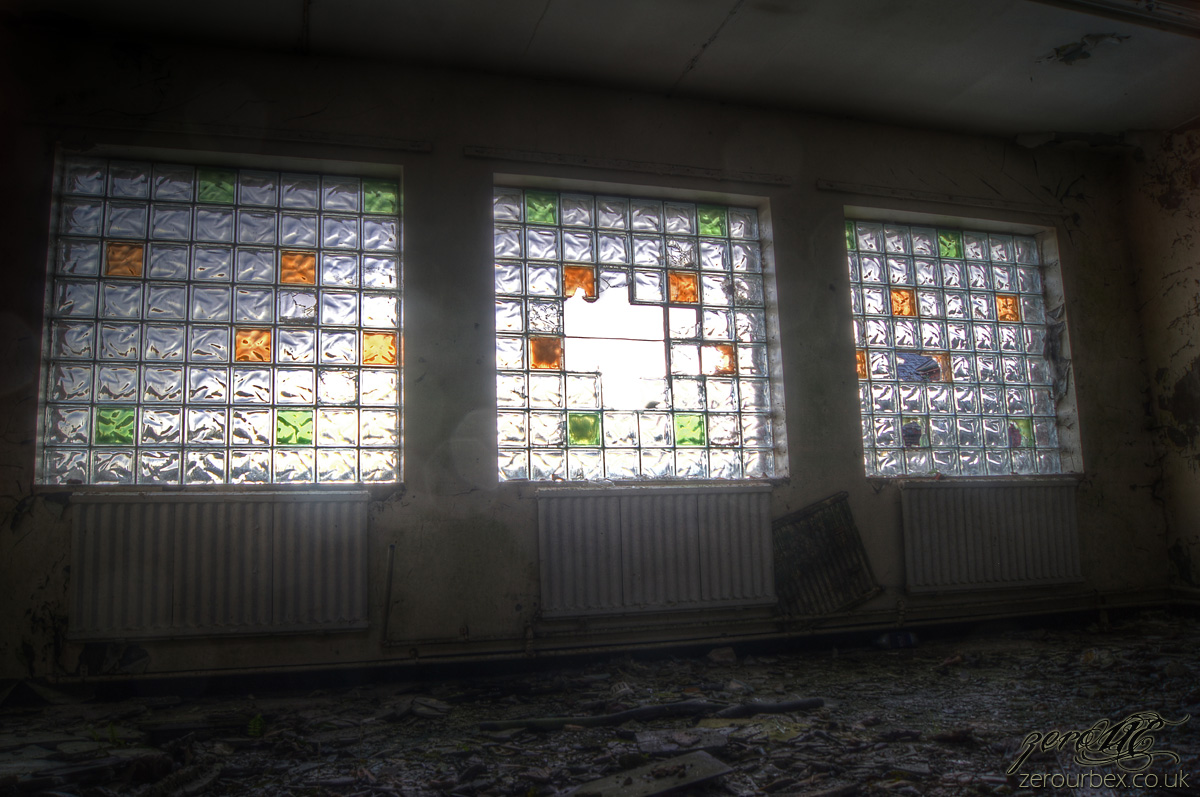
2
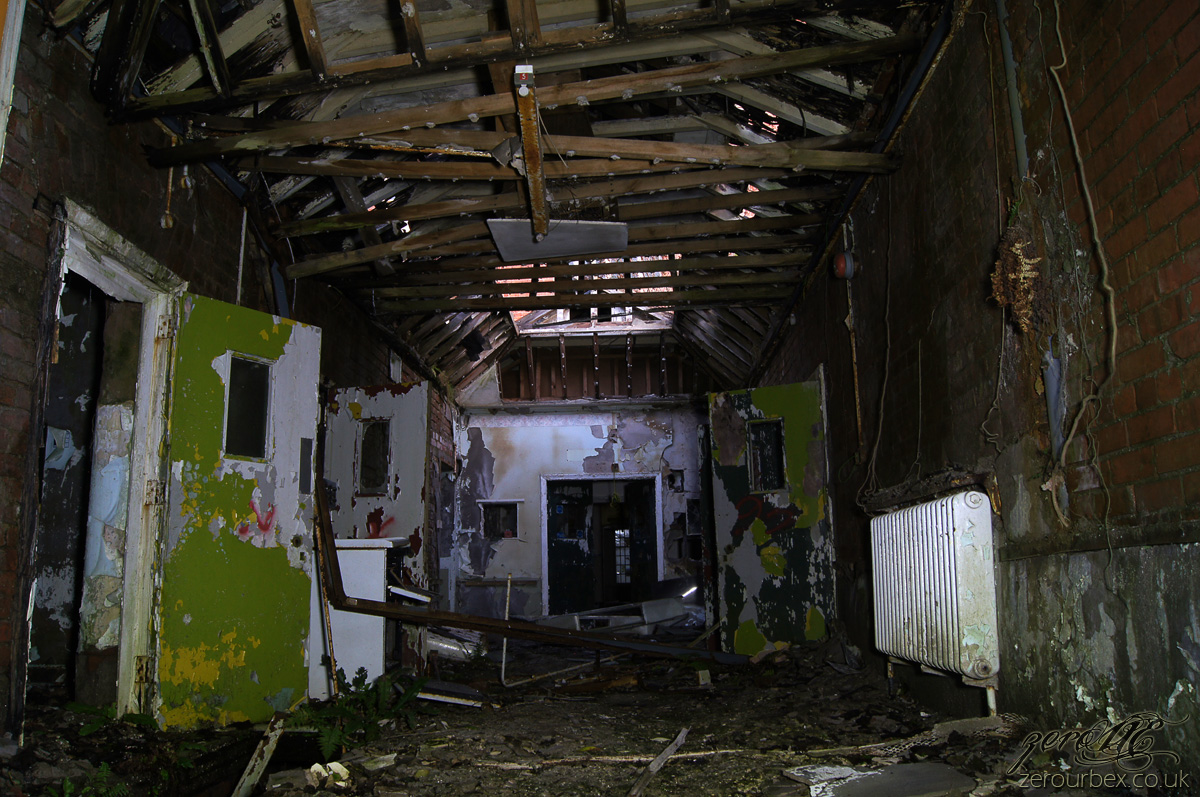
3
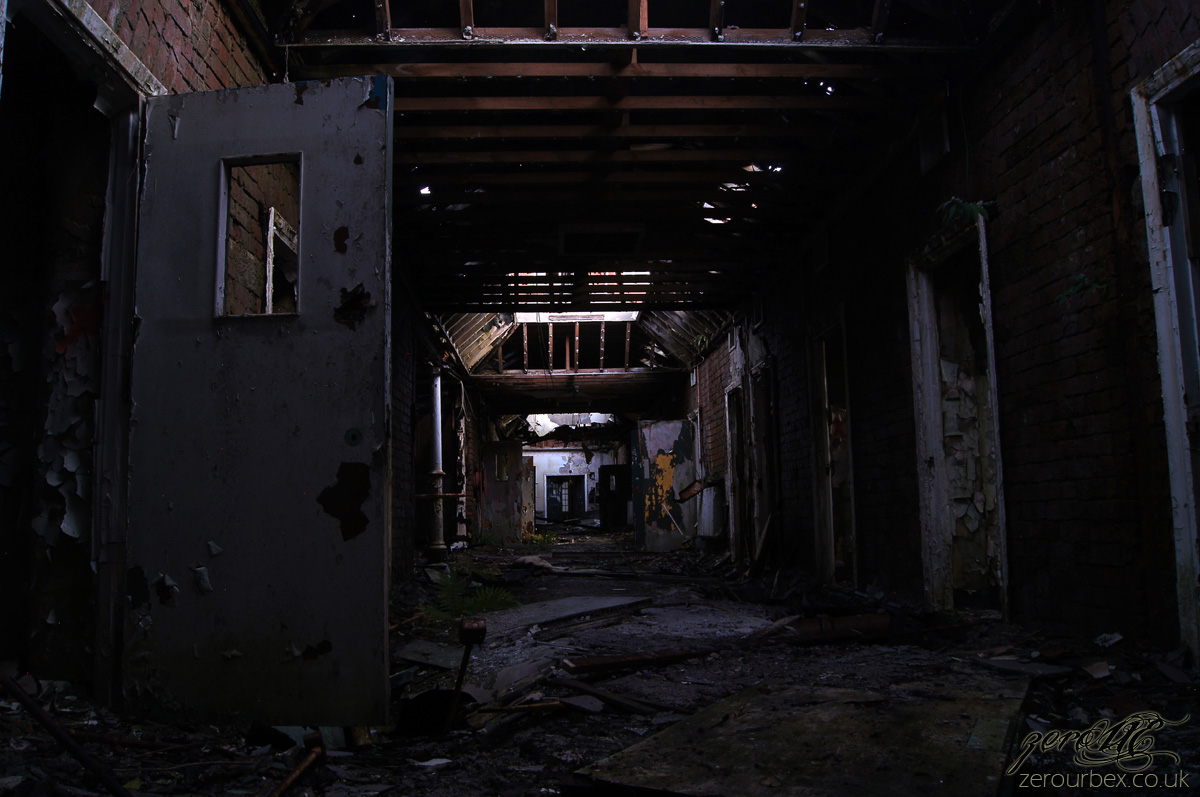
4
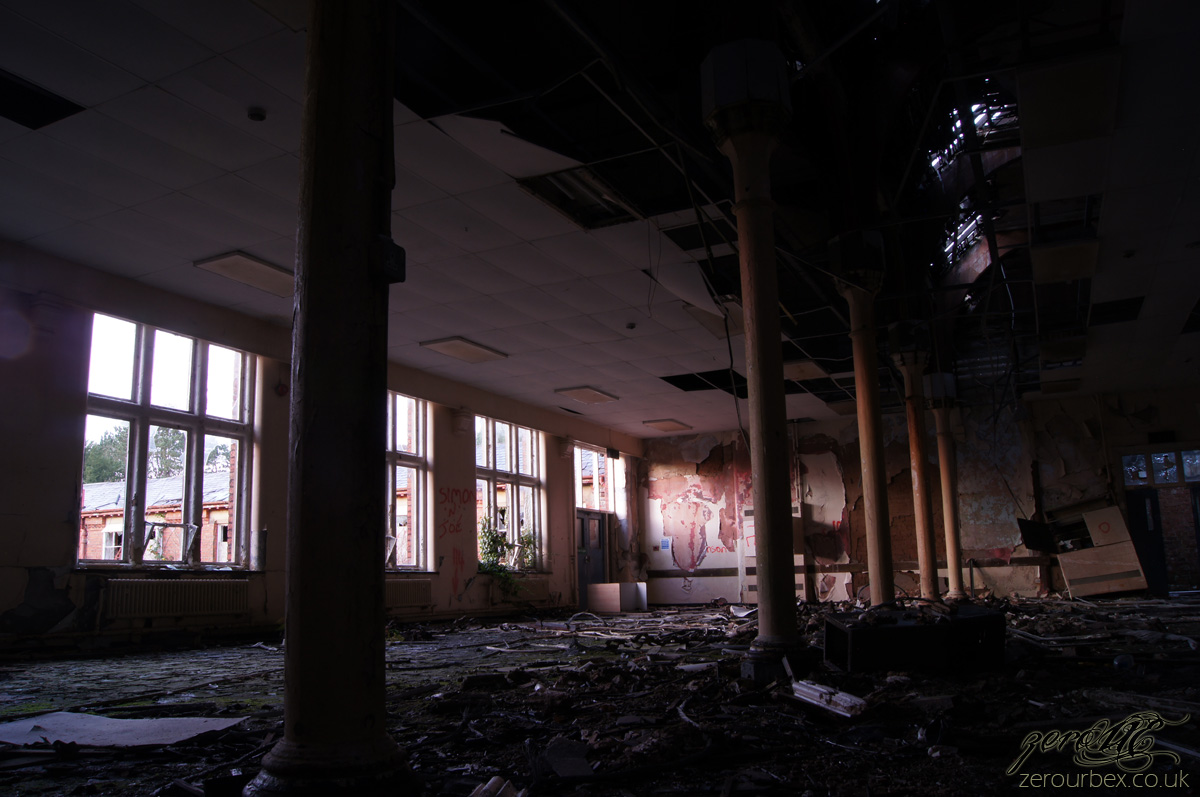
5
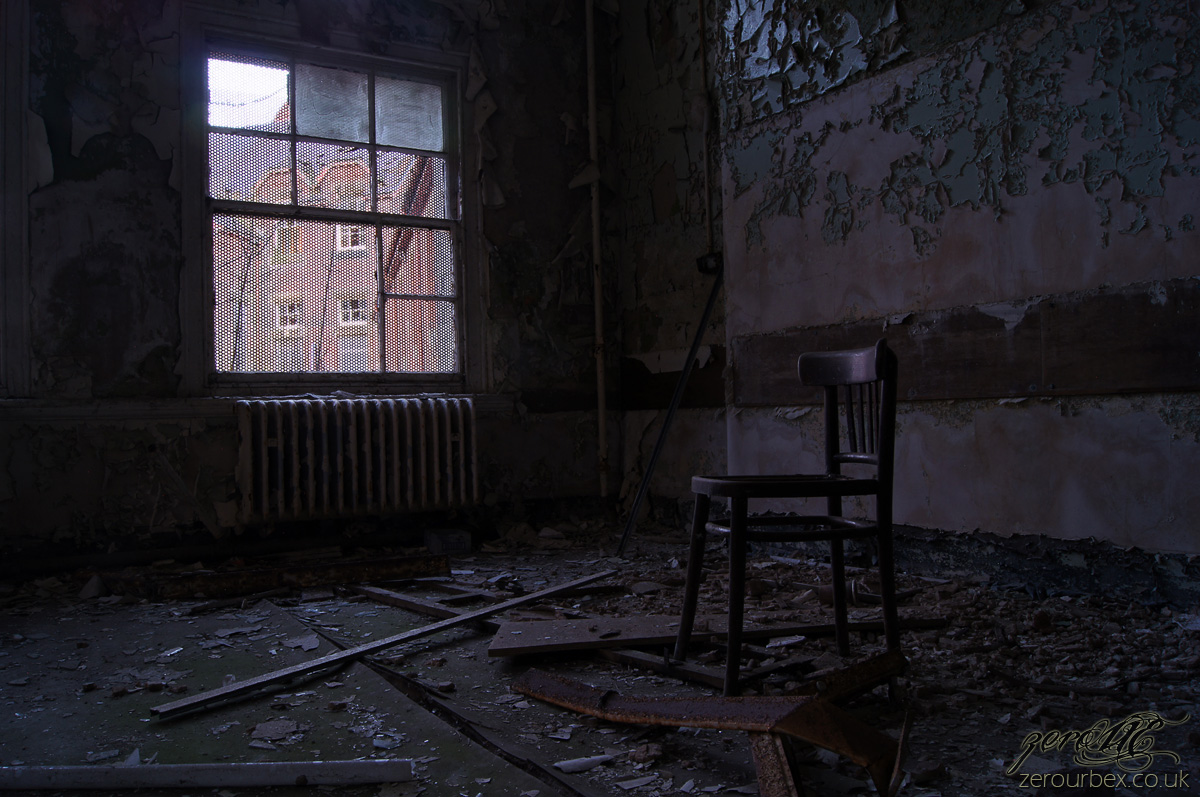
6
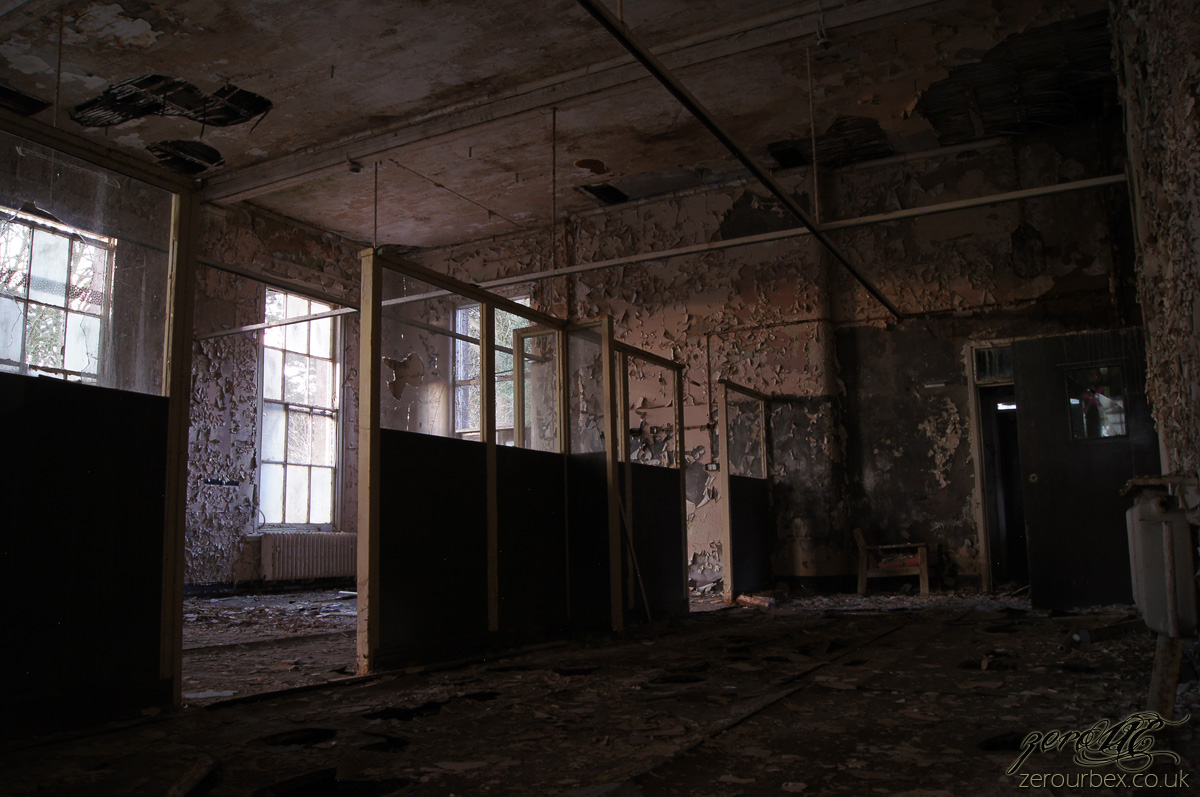
7
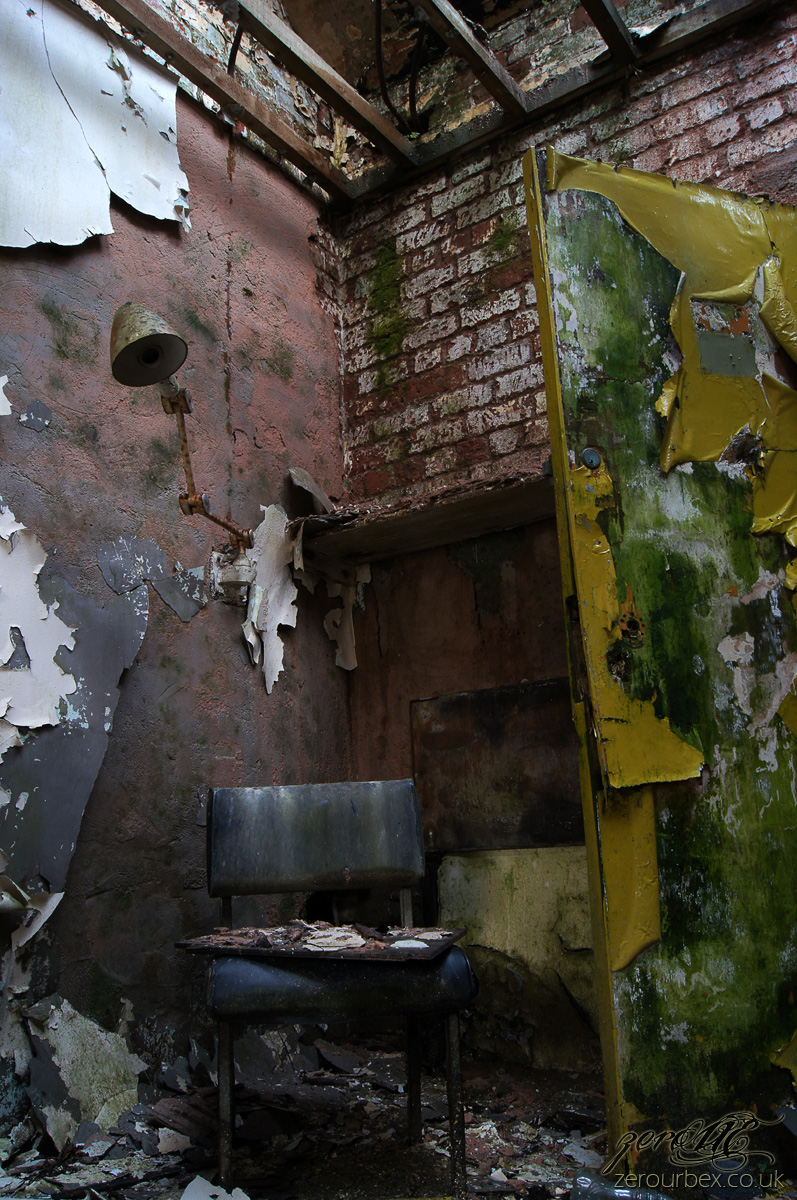
8
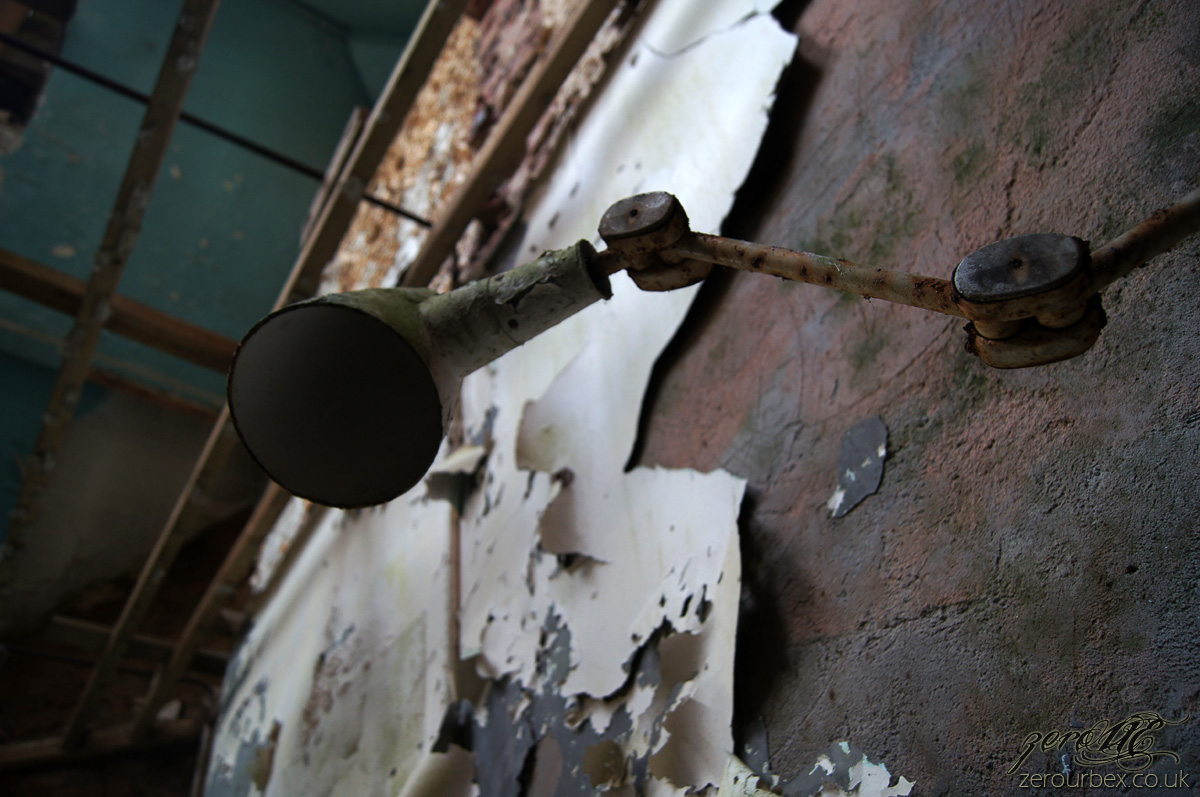
9
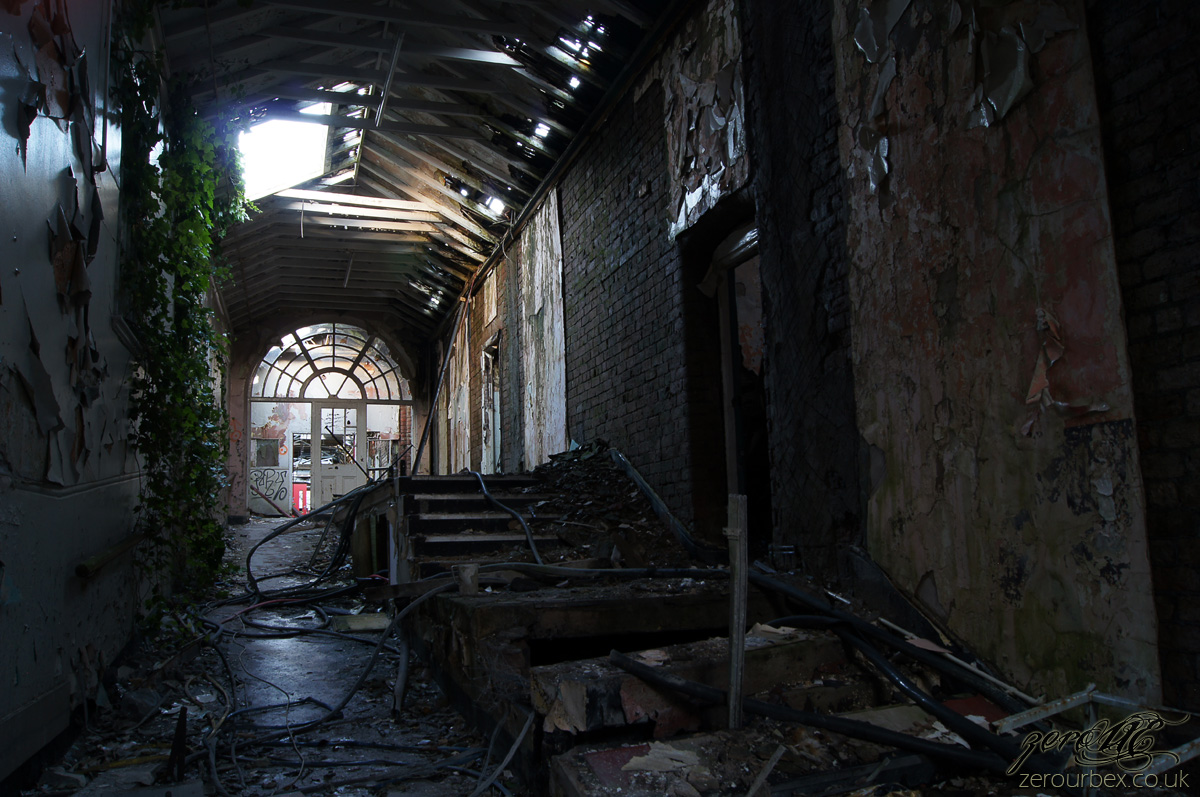
10
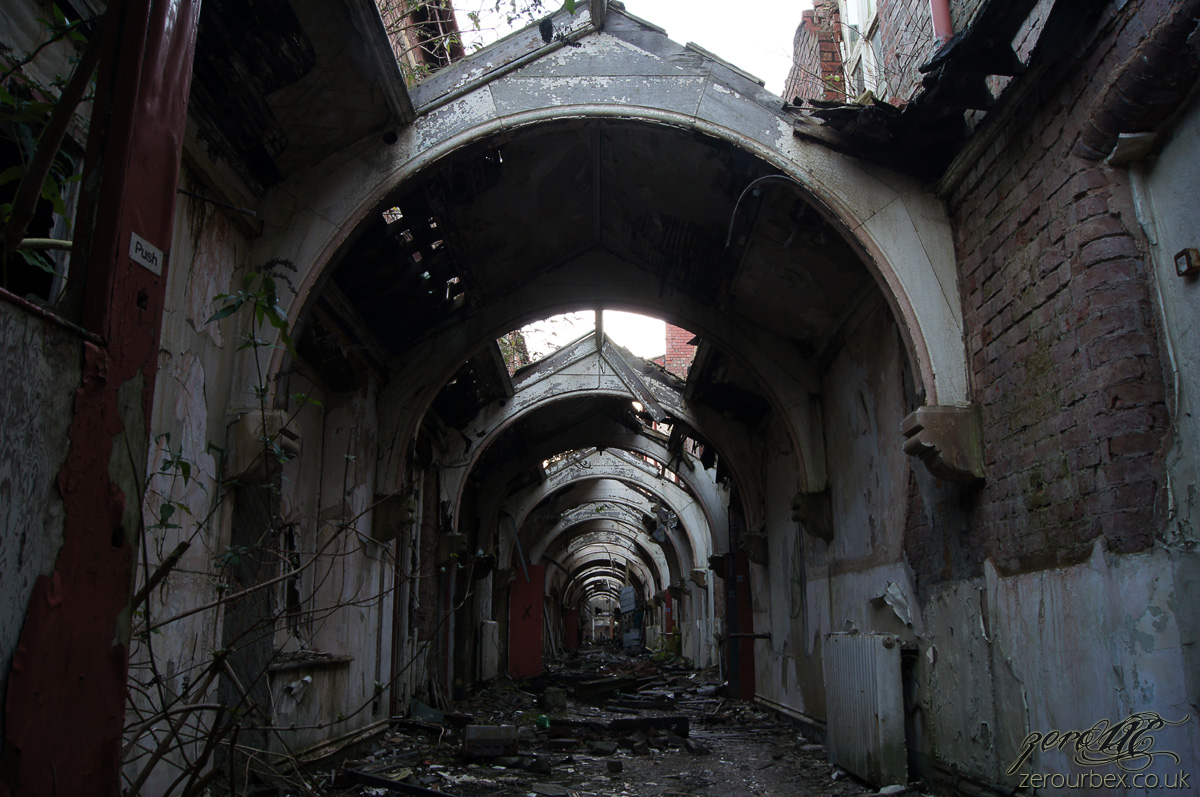
11
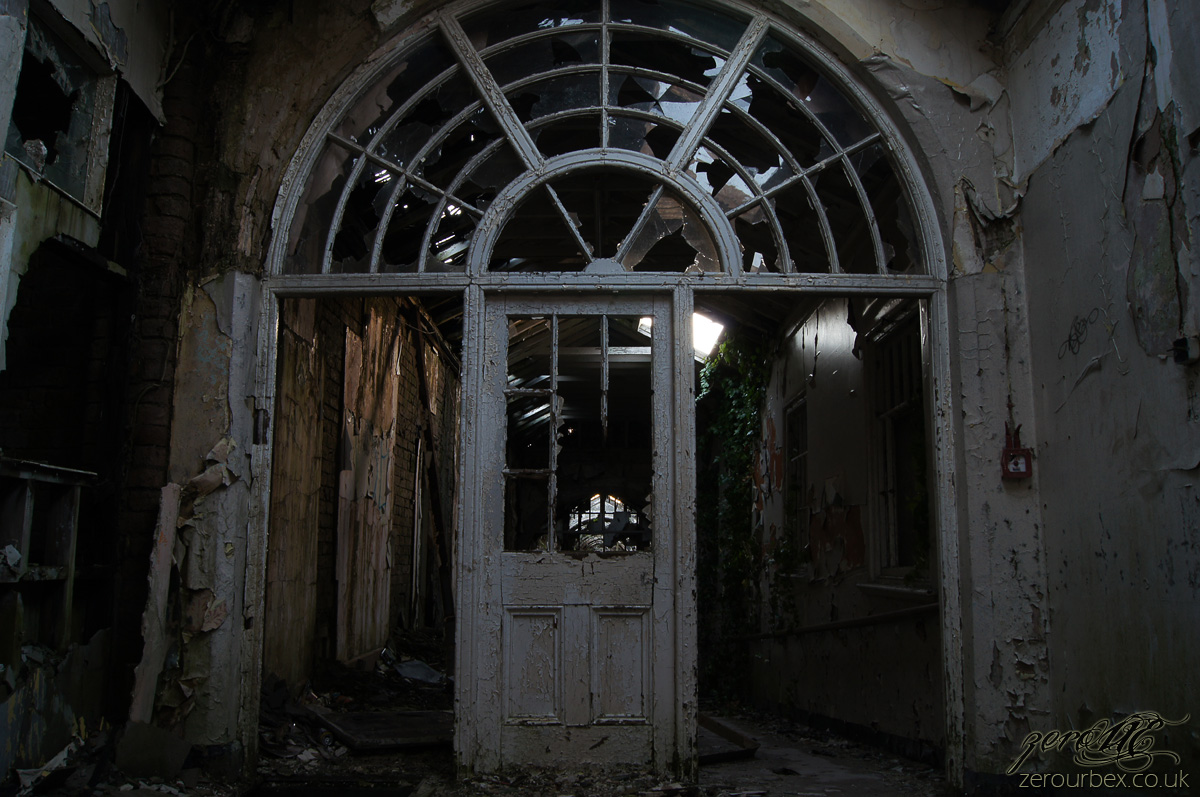
12
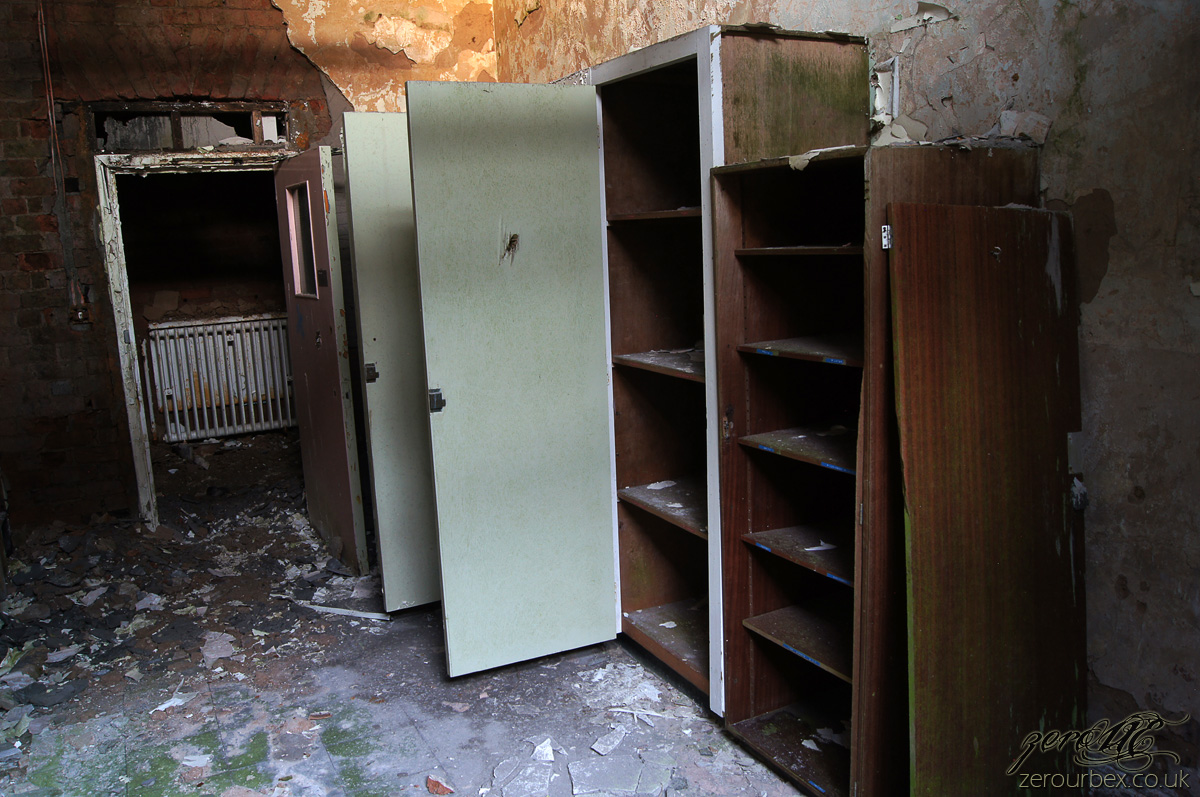
13
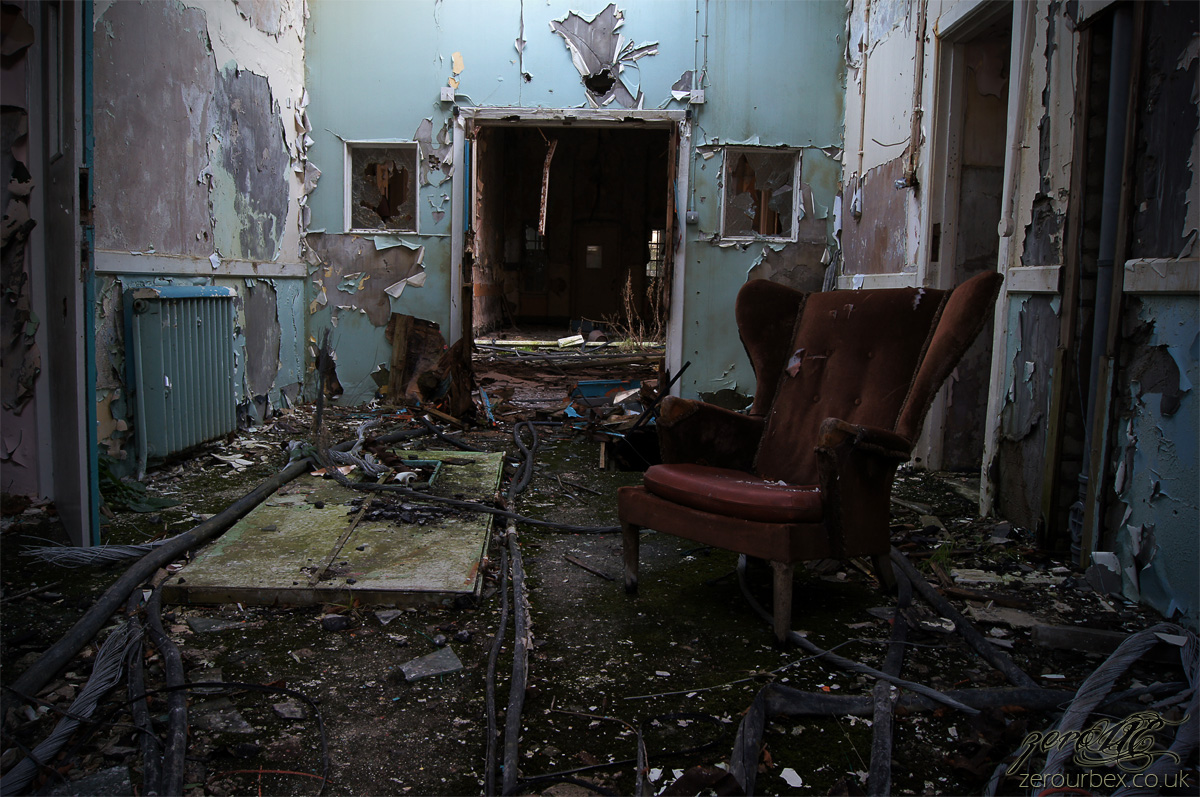
14
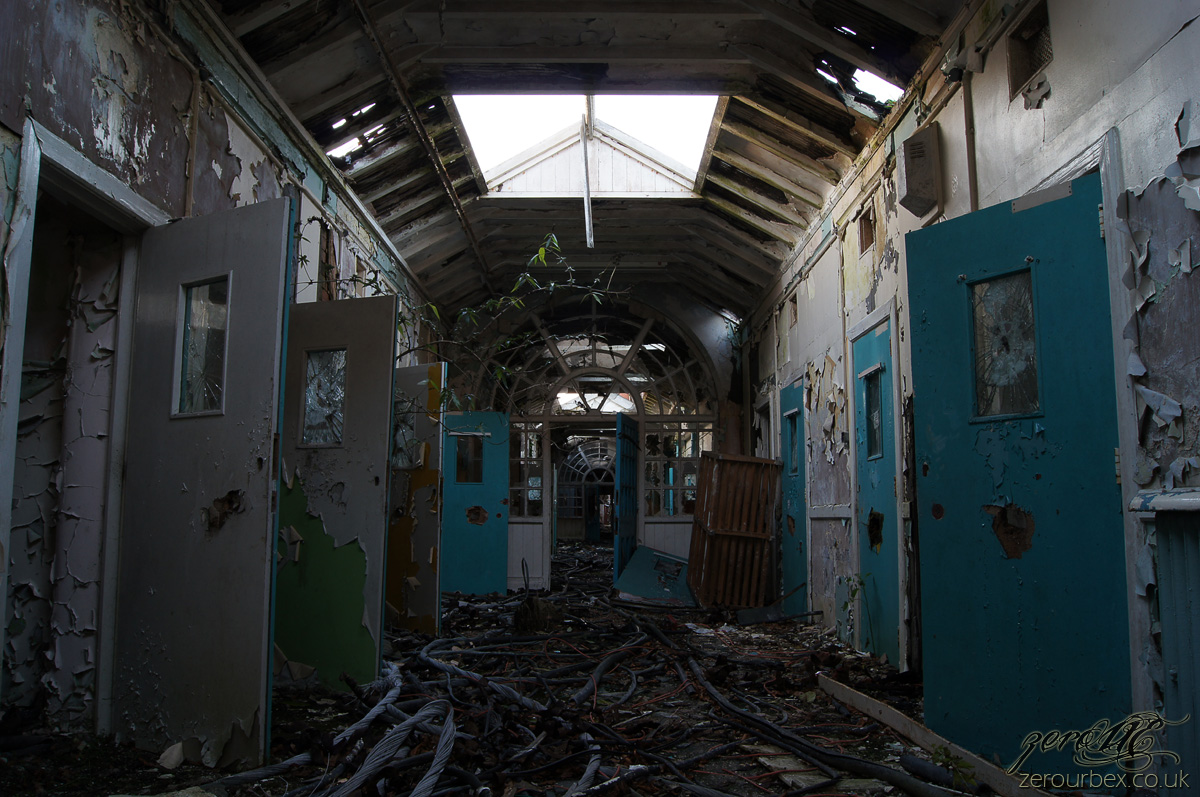
15
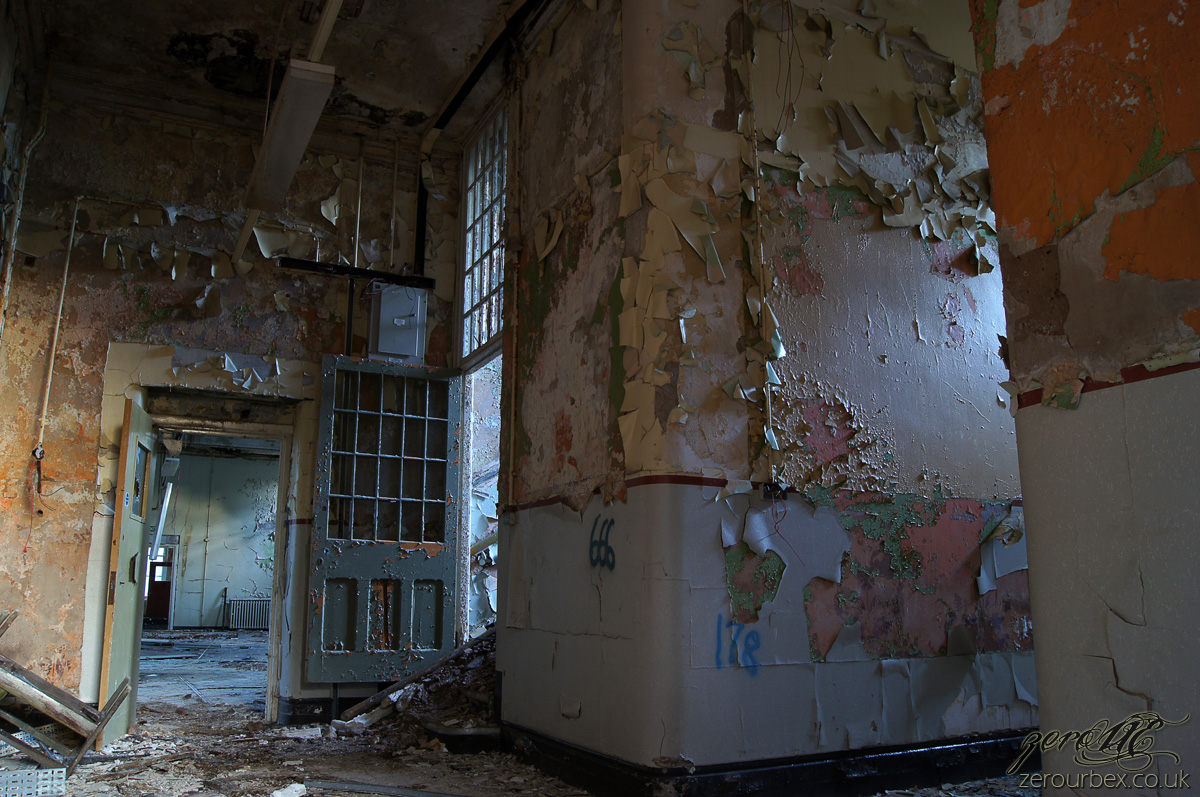
16
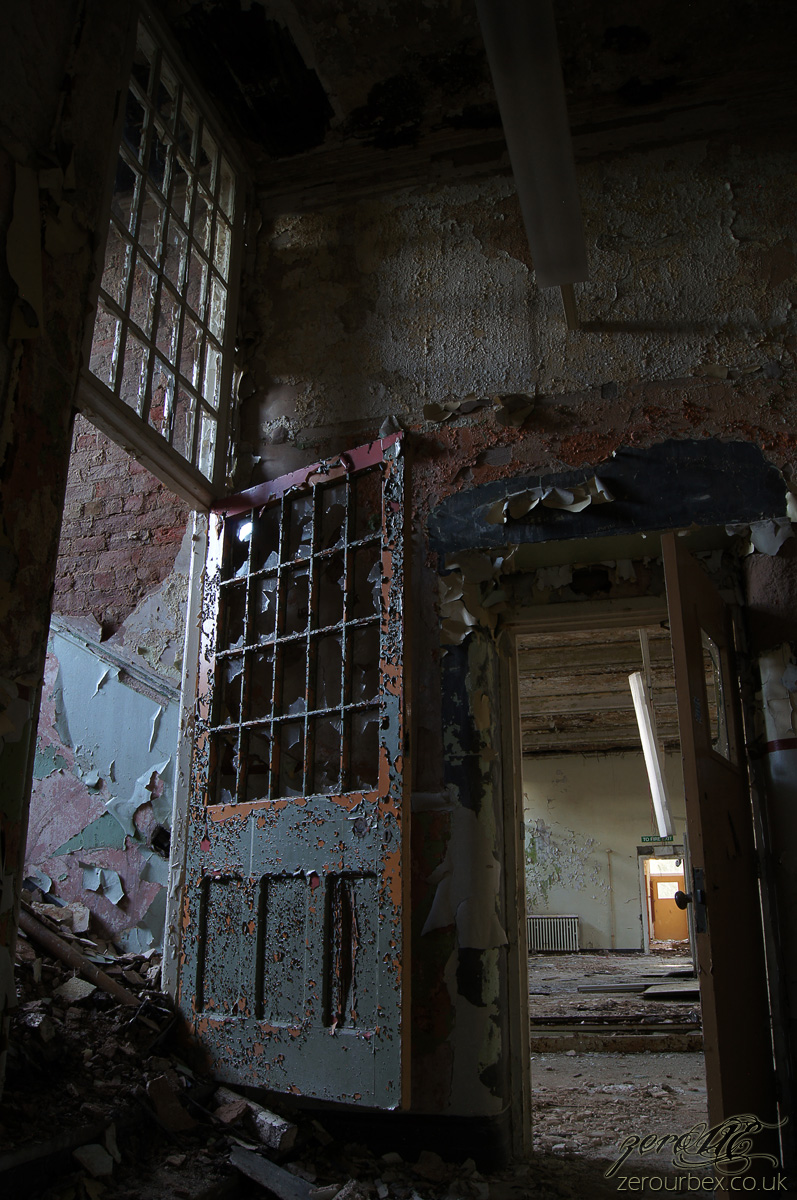
17
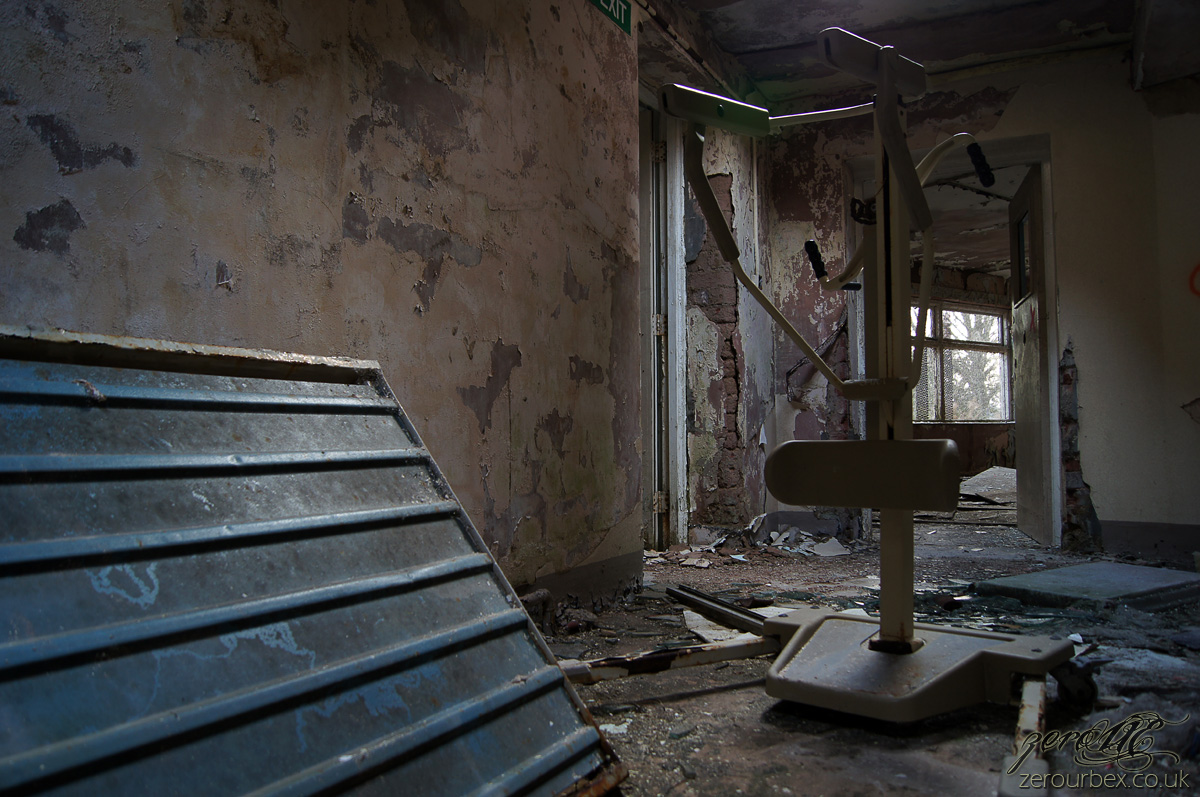
18
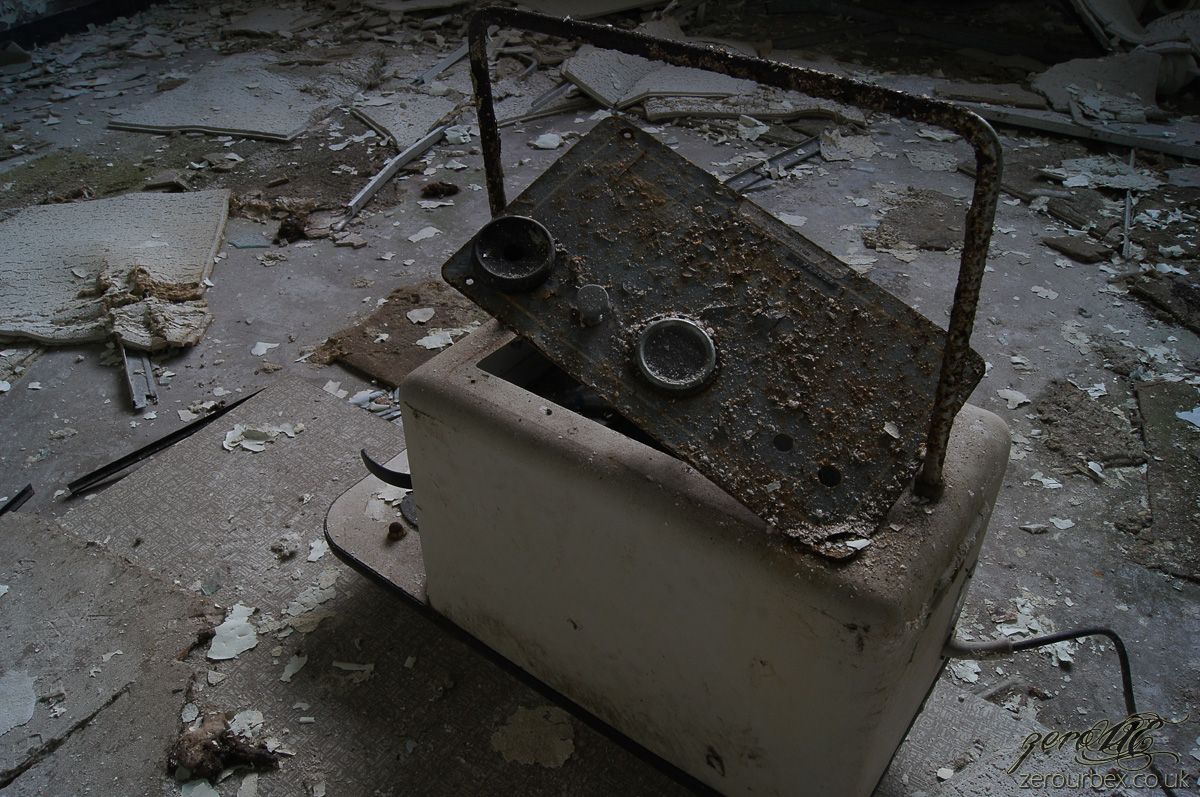
19
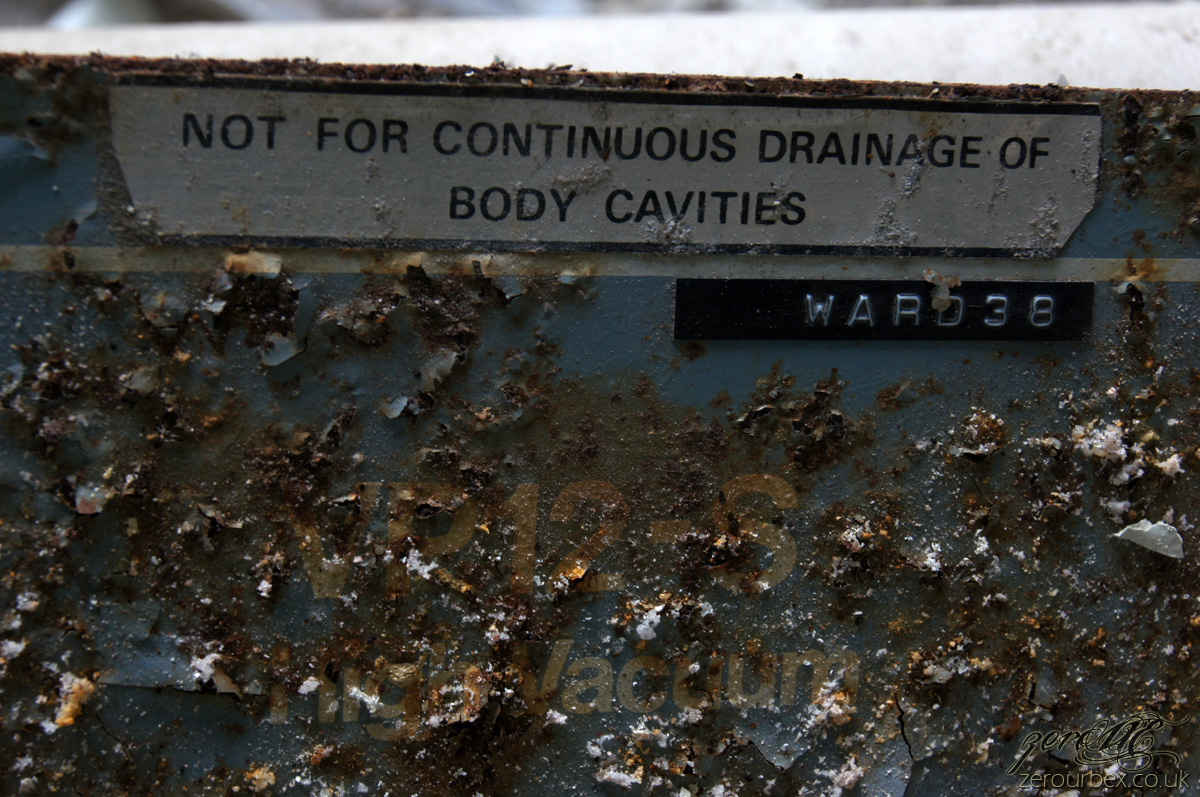
20
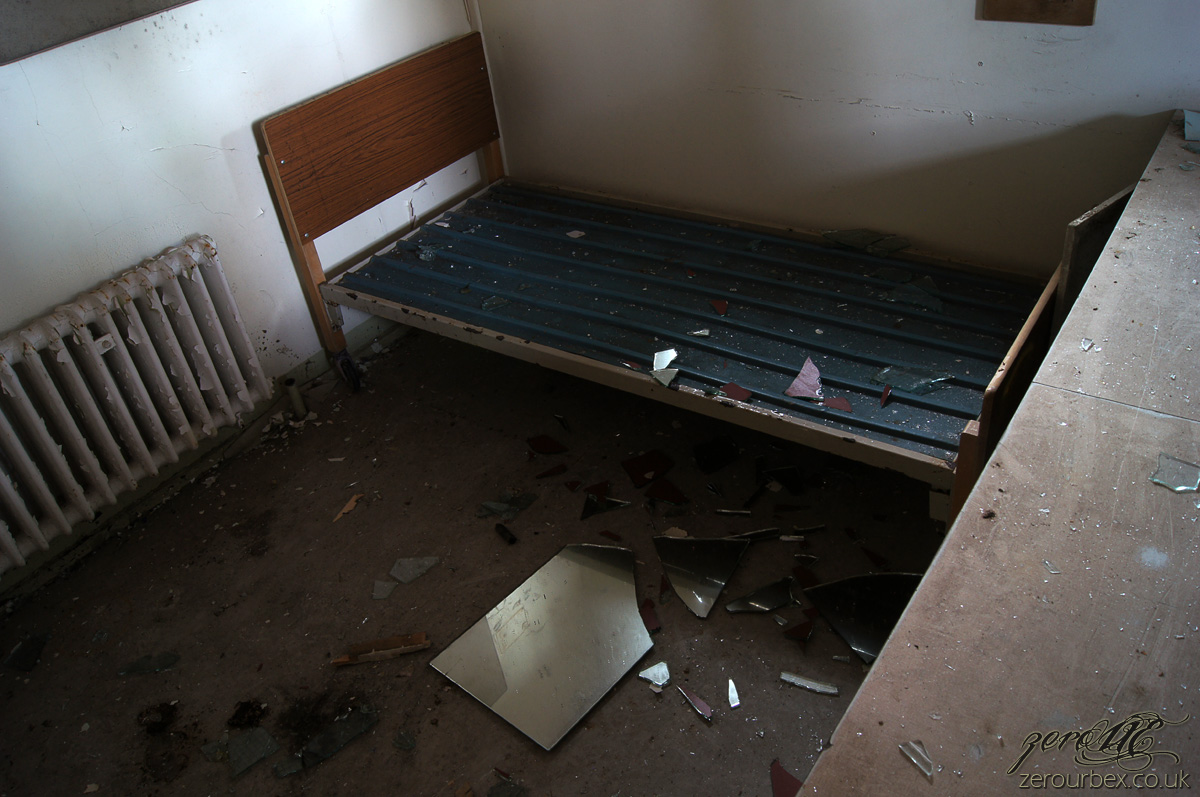
21
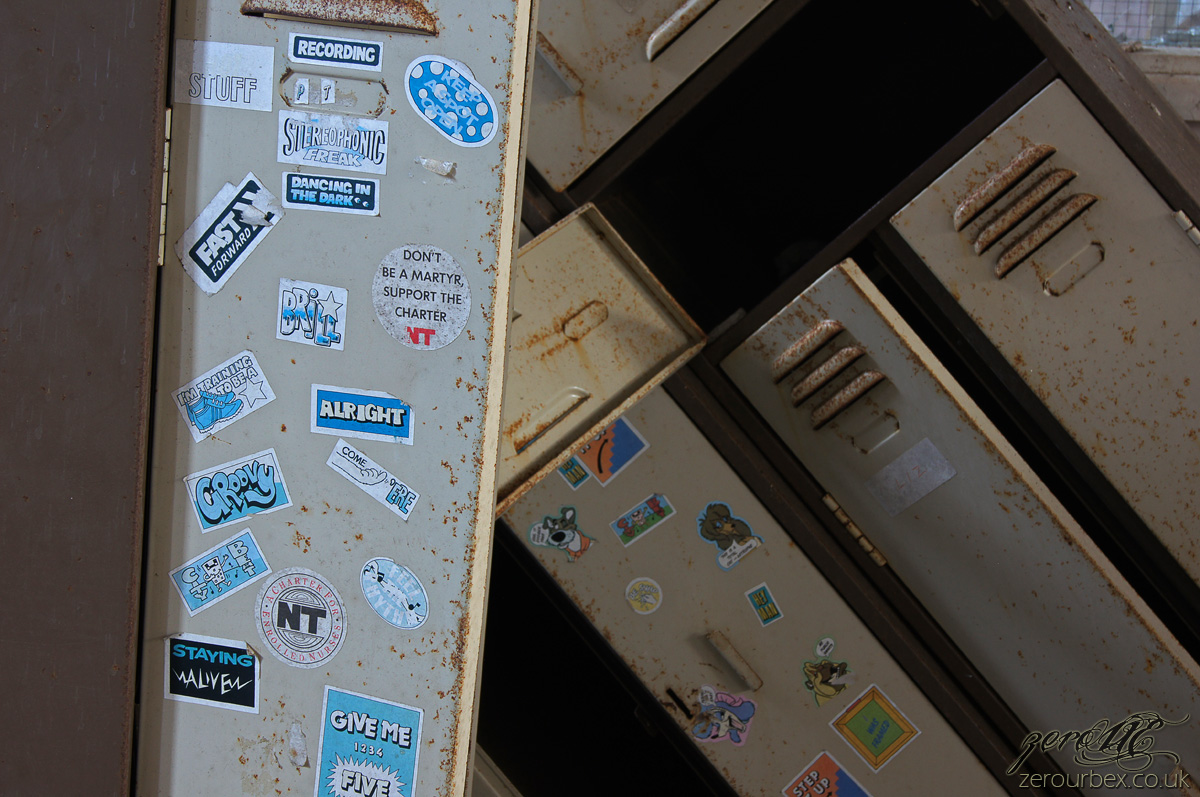
22
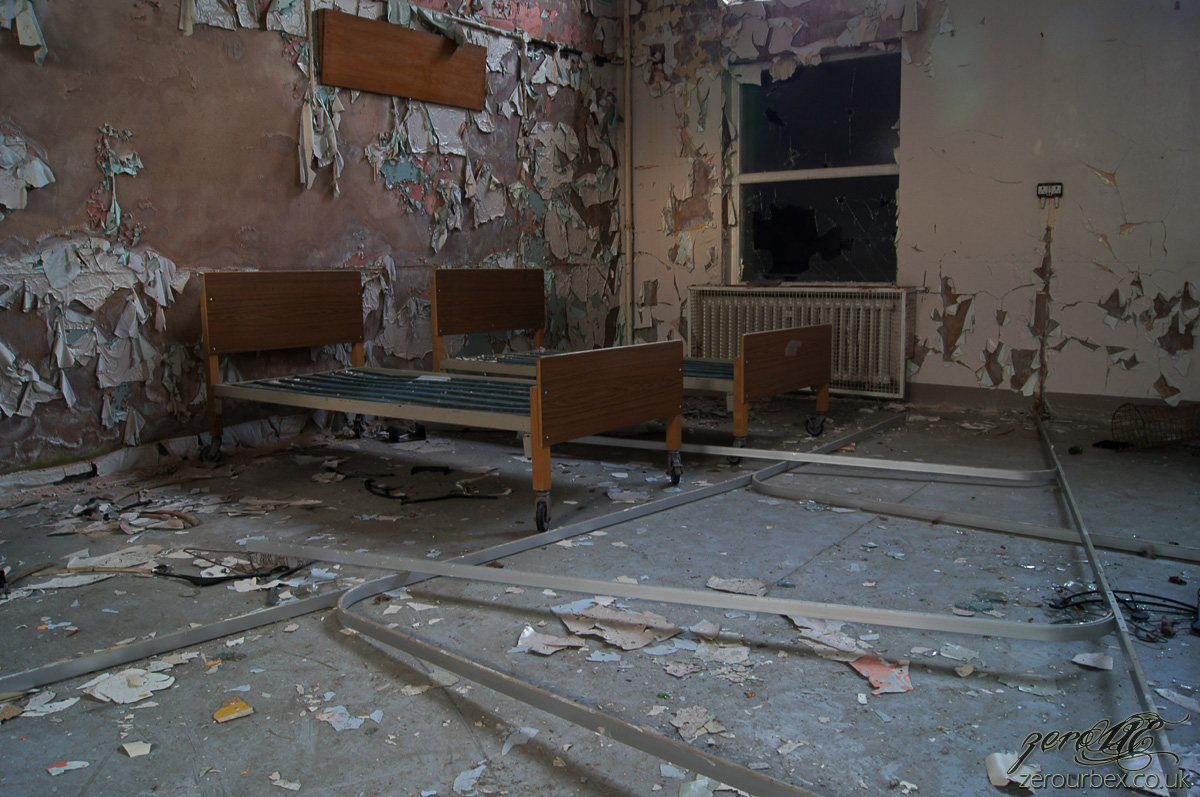
23
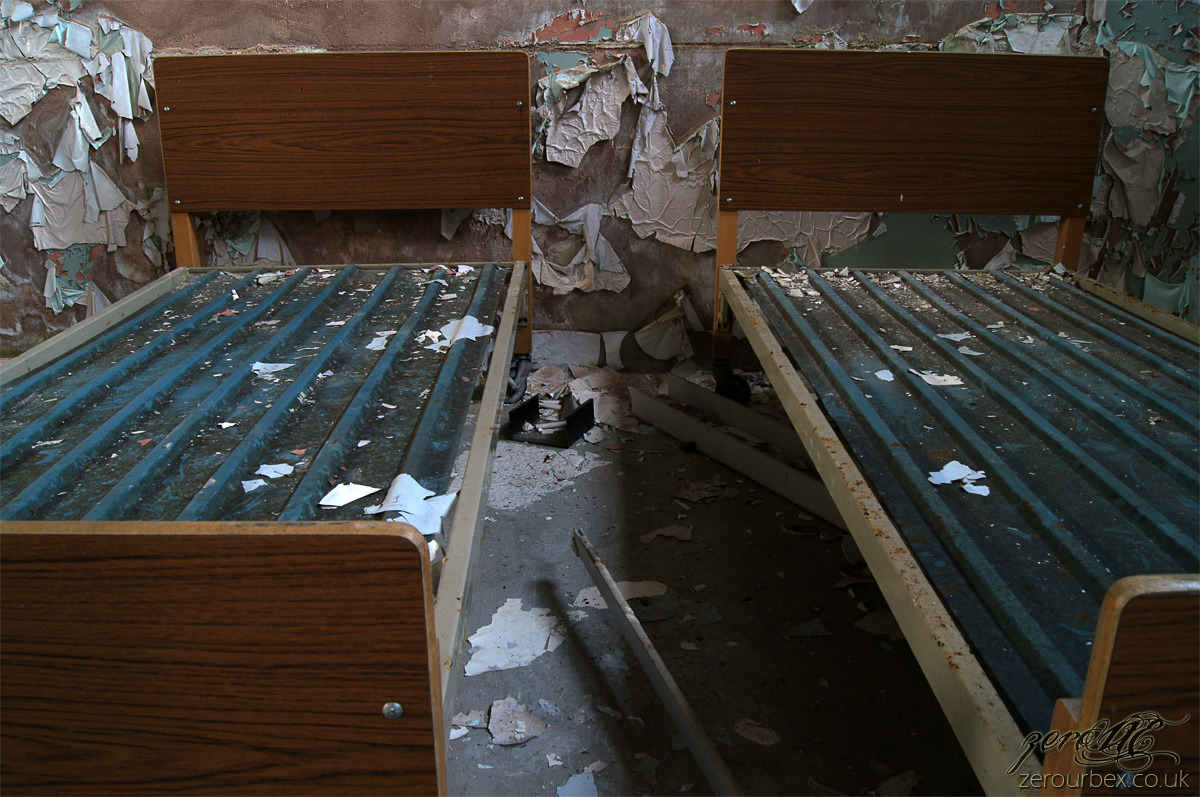
24
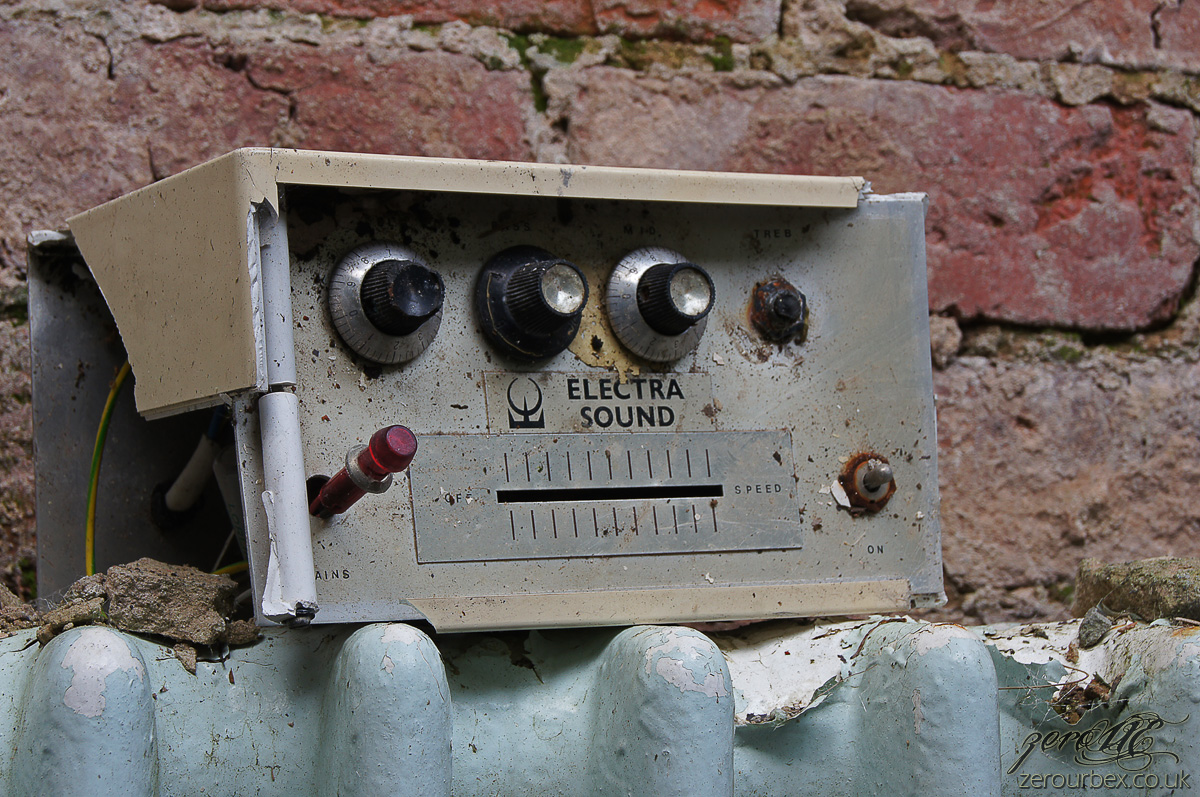
25
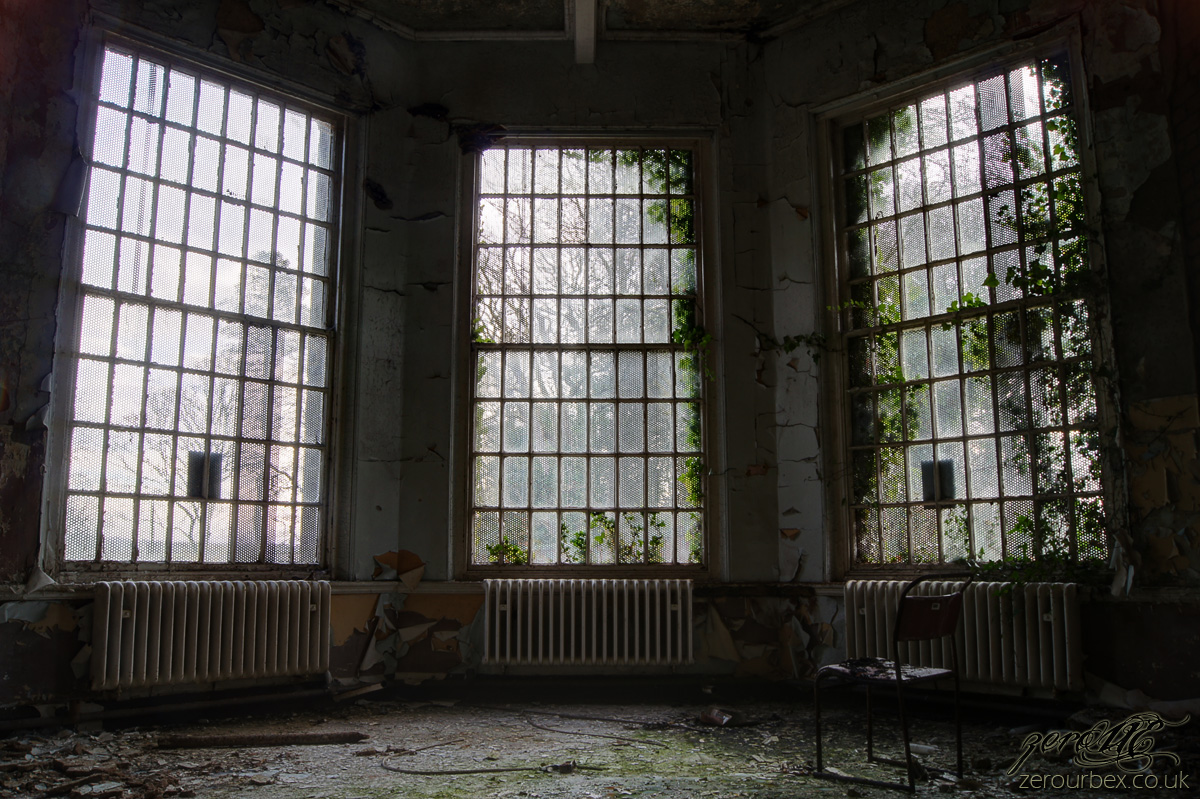
26
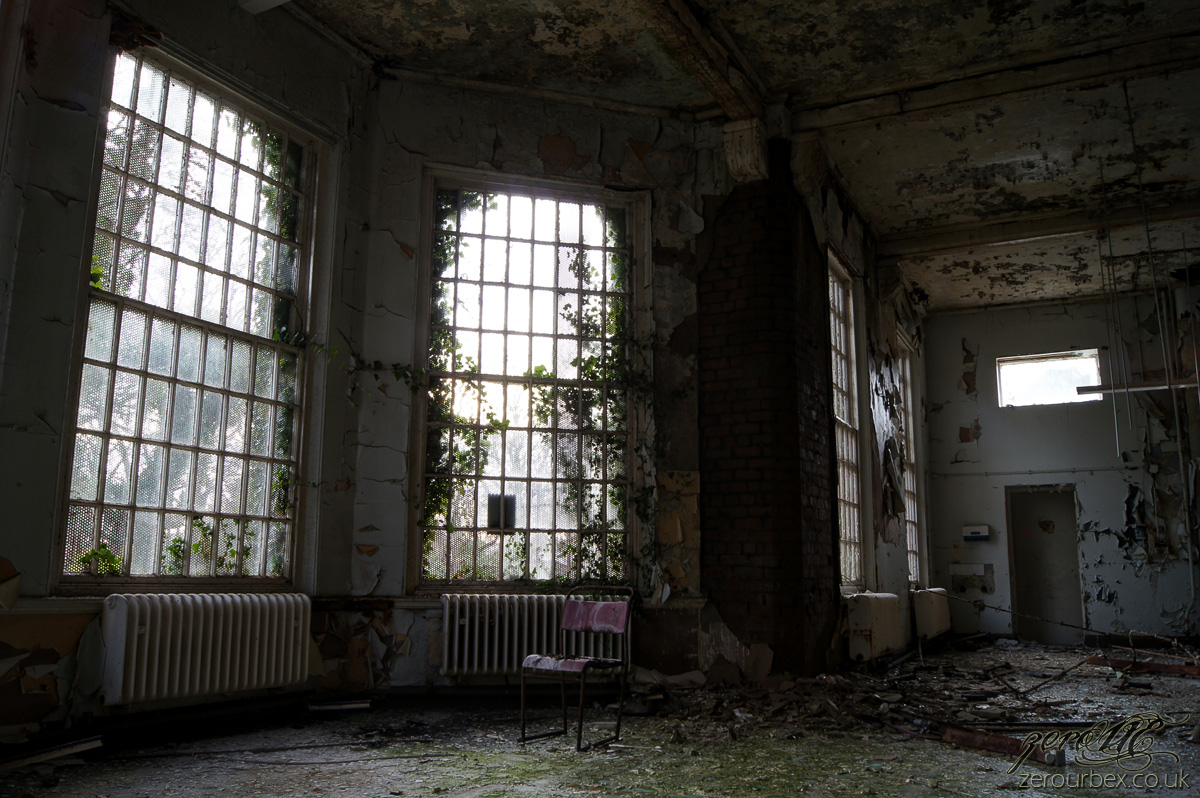
27
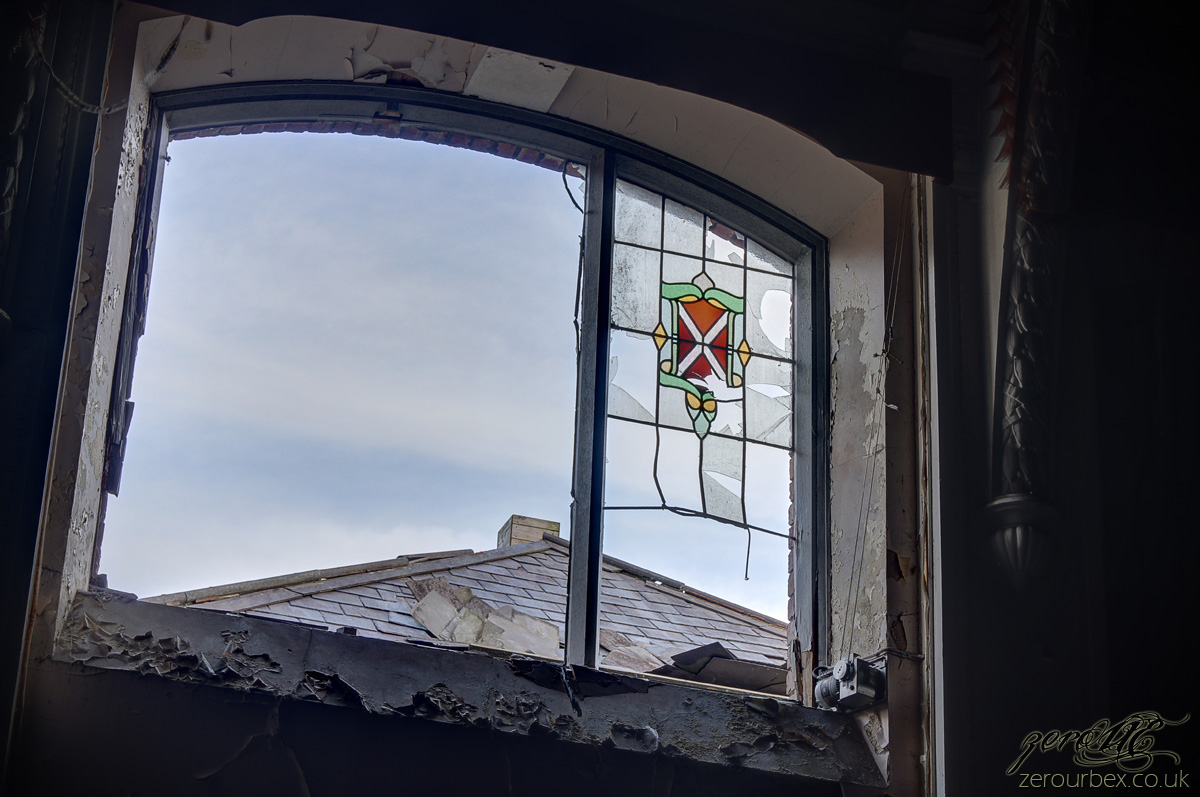
28
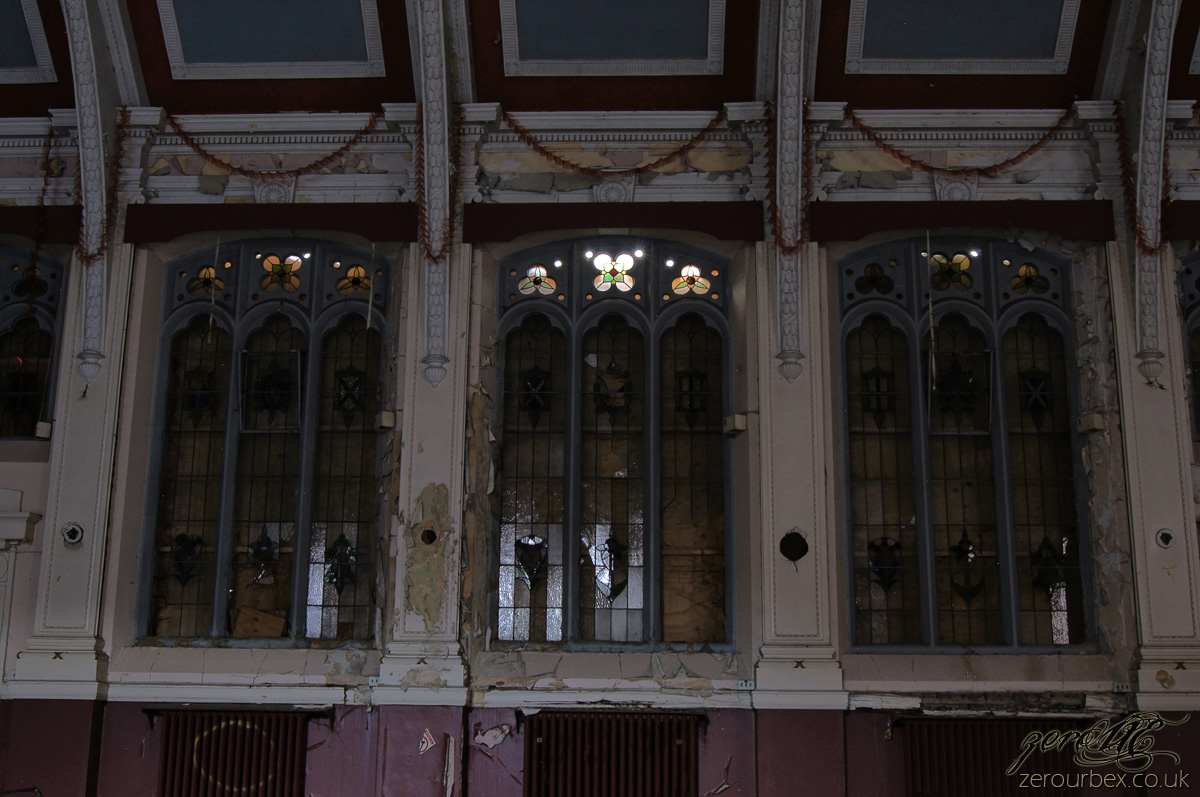
Thanks for looking!
www.facebook.com/zerourbex | www.zerourbex.co.uk
Well... this place is massive, and a bit of a death trap to navigate in places with roofs missing, very rotten floors which are falling away, and lots of debris lying around. Despite all this however it does have a certain charm and was a great explore. Also a big thanks to a certain two people for their assistance, you know who you are!
So, onto the blatantly stolen wiki history...
The hospital was founded in 1869 and grew to be the largest mental hospital in Britain, and pioneered the use of electroencephalograms (EEGs). During its time it had its own church, farms, railway, telephone exchange, post office, reservoirs, gas works, brewery, orchestra, brass band, ballroom and butchers. It closed in 1995.
The hospital officially opened on 1 April 1873. The large complex (later known as St. Luke's Division) had an initial capacity of 1000 inmates and included an Anglican church, a Catholic chapel, a recreation hall and a large farm estate.
In 1878 a new annexe (later known as St. John's Division) was built on 68 acres of land to the north of the site. The annexe was completed in 1880 and accommodated 115 patients and, by the special agreement of the Postmaster General, the hospital's own dedicated Post Office. In 1884, a sanatorium was established in the grounds for patients with infectious diseases.
In 1892 works began for the grounds to be illuminated by electric lamps; these works were completed in 1894. Around this time an annexe called Cameron House was opened to the northwest of the main building, joined in 1912 by a third annexe, later to become known as St Margaret's division. By 1915 the number of inmates was recorded as 2,820 more than double the asylum's original capacity.
In 1918 the New West Annexe (St Margaret's) was commandeered for the treatment of war casualties: patients who died during treatment were buried in the institution's private cemetery at the northern edge of the site. The hospital was returned to civilian use the following year following the cessation of hostilities.
In 1923, the name ‘Whittingham Asylum was dropped in favour of Whittingham Mental Hospital, a change later reinforced in law by the Mental Treatment Act 1930.
In 1929, the Hospital Commissioners noted that an open door principle was practiced on a number of wards, and the 1930 Act later resulted in the admission of the first voluntary patients. By 1939, the number of patients was 3533, with a staff of 548, making it the largest mental hospital in Great Britain.
At the outbreak of the Second World War in 1939, Wards 31 to 36 in the West Annexe were again commandeered by the military and mental patients were relocated to other hospitals in the area. The commandeered wards were renamed the Whittingham Emergency Hospital and treated casualties of war, both military and civilian, the first being evacuees from Dunkirk. Following the end of the conflict the wards were returned to civilian use in 1946.
In 1948, the hospital became part of the newly formed National Health Service and was renamed Whittingham Hospital.
While working at the hospital during the 1950s, Dr C S Parker and Mr Charles Breakall produced an early electroencephalograph (EEG) machine using War Surplus material purchased for 2.10.0d. and conducted pioneering experiments in the field of encephalography and mental illness using patients there. An article was published in The Lancet describing these experiments, and considerable interest was said to have been expressed by the American Department for Space Medicine at the time.
On 18 July 1967, the Student Nurses Association held a meeting with the senior nursing tutor, submitting serious complaints of cruelty, ill-treatment and fraud in the hospital. The Head Male Nurse then called a meeting of all students in which the students were threatened with actions for libel and slander. Several further complaints were suppressed until the following year when the Hospital Management Committee finally intervened and announced an inquiry into allegations of corruption and abuse. The inquiry divided the allegations into three specific headings: Care of Patients, Organisation of Services, and Financial Control. The enquiry heard (among others) the following complaints:
That patients had been left untreated
That some patients had been given only bread and jam to eat or had been given food mixed up and served as slops
That some patients had been locked outside, regardless of weather conditions, or in washrooms and cupboards.
That in one ward, students had witnessed patients being dragged about by their hair.
That on ward 3, a male ward, patients were given wet towel treatment, which involved twisting a cold, wet towel or bed sheet round a patient's neck until the patient lost consciousness. Patients were also seen to have been punched and locked in a storeroom.
On ward S2, another male ward, it was alleged that two male nurses had poured methylated spirits into the slippers of one patient and into the dressing gown pocket of another and set them alight.
It was also reported that some wards were infested with vermin and others were too cold, too hot or too damp. In addition, it was found that there was a culture of petty theft on the wards and of serious fraud and embezzlement in some administrative offices.
In 1968-69, £91,000 was issued from sources for the use of patients, yet only £42,000 was recorded as having been spent in the hospital shop, supposedly leaving the remaining £49,000 unaccounted for.
As a result of the investigation, both the Head Male Nurse and the Matron took early retirement. Two male nurses were convicted of theft and in a separate incident another nurse was jailed for manslaughter after an elderly patient he had assaulted later died
During the 1970s and 1980s, new drugs and therapies were introduced to treat people suffering from mental illnesses. Long-stay patients were returned to the community or dispersed to smaller units. The hospital closed in 1995.
1

2

3

4

5

6

7

8

9

10

11

12

13

14

15

16

17

18

19

20

21

22

23

24

25

26

27

28

Thanks for looking!
www.facebook.com/zerourbex | www.zerourbex.co.uk




 cheers
cheers